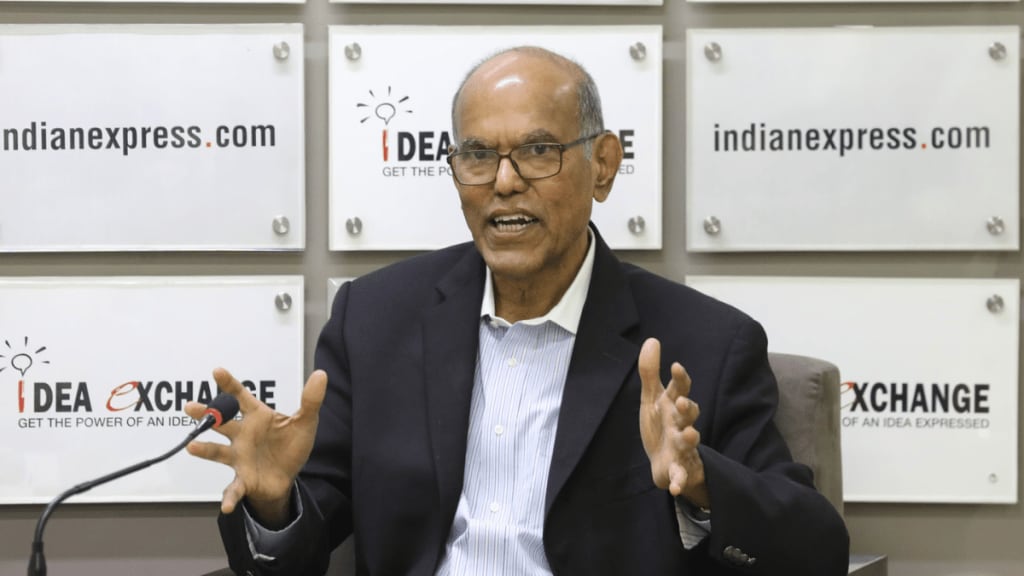Duvvuri Subbarao, in an interview with The Indian Express, said that the tariffs proposed by US President Donald Trump on labour-intensive exports, such as textiles and gems, will not only slow economic growth but also trigger a massive job crunch. However, former Reserve Bank of India (RBI) governor sees an opportunity in this hour of mayhem.
This is because the US has imposed a 50 per cent tariff on Indian exports such as textiles and gems, which make up about 2 per cent of India’s GDP – a huge number when labour-intensive sectors are taken into consideration. Indian exports to the US in these sectors will become much more expensive and less competitive compared to other countries that face lower tariffs.
High tariffs may dent India’s reputation
Subbarao estimated a potential growth hit of 0.20 to 0.50 per cent in a year, even after factoring in potential trade diversion to other markets or domestic adjustments. He warned that the tariffs could also dent India’s reputation, raise borrowing costs, and heighten global economic uncertainties, putting more pressure on already stressed export-driven industries.
“Being labelled a ‘dead’ economy by a US president carries reputational costs,” says Subbarao, adding that Trump’s tariffs may end up being costly both politically and economically for the US as they strain trade relations and diplomatic ties, along with disrupting the global trade flows.
The rising geopolitical tensions and protectionism, he said, may increase risk premia – meaning that the investors may demand extra money to compensate for the risks involved in lending or investing money globally. And, as this increases, liquidity tightens, money flows slow down, credit availability shrinks, and borrowing costs increase. This raises the overall cost of doing business for India and could slow down growth, not just for India but for its trade partners as well.
Impact of Trump’s tariffs on India
The immediate impact of Trump’s tariffs on India, which is one of the highest on its trading partners, would be “sharp”, Subbarao said. He based this on estimates by experts that suggest that tens of billions of dollars worth of Indian exports to the US are at risk.
Since these sectors depend on low costs and high volumes to compete globally, higher tariffs could squeeze profit margins, forcing businesses to cut prices further and reduce staff, while also widening India’s income inequality gap.
Another concern here is China. Given the high tariffs, China may dump their products in India to compensate for the lost US market share, which in turn, will hurt manufacturers in India.
The high tariffs will also paralyse India’s “China+1 ambition”, which is to become an alternative manufacturing hub besides the East Asian country.
It does not mean that India will stop trading with China altogether, but reduce its overreliance on it as the sole manufacturing hub. This will reduce trade tensions, rising labour costs, supply chain disruptions, and more.
He further pointed out that facing higher tariffs than competitors in ASEAN or South Asia will make integration into global supply chains even harder and force buyers to prefer other countries.
ASEAN (Association of Southeast Asian Nations) includes 10 countries to accelerate economic growth, social progress, and cultural development, as well as promote regional peace and stability. These include countries Brunei, Cambodia, Indonesia, Laos, Malaysia, Myanmar, Philippines, Singapore, Thailand, and Vietnam.
‘No easy fixes’
While talking about the strategy(ies) that Indian exporters, especially in the fields of textiles, gems & jewellery, electronics, pharma, etc, should adopt, Subbarao admitted that there are “no easy fixes” to that. He said that the exporters should absorb the tariff shock by renegotiating the prices with the buyers, possibly lowering their margins to stay competitive.
Second, he said, they should focus on diversifying. This means that they should try to find alternative markets to sell their goods and reduce dependence on the US, should it continue with 50 per cent tariffs.
He also advised the exporters to benefit from government schemes that are in place, including the duty-drawback, which allows a rebate of duty on any goods manufactured in India and exported.
Subbarao further said that diversification for certain sectors that rely heavily on the US market, such as solar modules, shrimp, and linen, will be “harder”.
Talking about long-term strategy, he said that exporters must move up the value chain. This means that instead of solely relying on offering low prices and high volume, they must shift their focus to higher-value goods.
“Exporters must move up the value chain, produce branded and design-rich goods, tighten compliance and traceability, cut lead times, and deepen domestic linkages to reduce input costs,” he further said, before stressing, “ Investments in automation, skills, and productivity will be critical.”
The economist recommended accelerating Free Trade Agreements (FTAs) and market access deals to secure preferential entry into major economies. He added, “It’s difficult but possible to turn Trump tariffs into an opportunity to make our exports more competitive and robust.”

